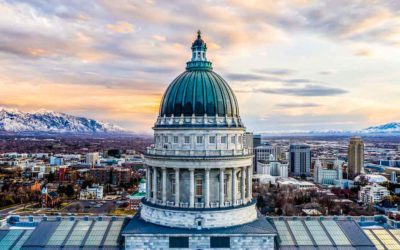
Written by William C. Duncan
January 14, 2021
In the 1950s, membership in the NAACP could be dangerous. A U.S. Supreme Court decision explained “that on past occasions revelation of the identity of its rank-and-file members has exposed these members to economic reprisal, loss of employment, threat of physical coercion, and other manifestations of public hostility.”
Today, this type of harassment could easily be magnified by technological advances. For instance, after the 2008 election, activists merged information about donors to the Proposition 8 campaign with data from Google maps so that opponents could find the residence or business of a donor and confront them. Of course, technology also increases the number of people who can become aware of an individual’s donation or membership and the ways that others can confront or harass that individual.
This scenario is the crux of a case the U.S. Supreme Court decided last week that it would hear during its current term.
The case involves a regulation issued by the California Attorney General for charitable organizations. Those organizations have long been required to provide financial disclosures, but they had only been asked to file basic financial information (IRS Form 990). In 2012, the attorney general began requiring charities to also file the additional parts of the 990 form which include donor names, addresses and contributions.
The Thomas More Law Center, a Catholic legal organization in Michigan, was required to file in California because, like thousands of other charities nationwide, it had communications with donors in the state. The center has a religious motivation and “advocates on issues that ‘arouse intense passions.’” Thus, the center had received “’threats, harassing calls, intimidating and obscene emails, and even pornographic letters.’”
This, of course, could lead donors and potential donors to fear that public disclosure of their names could result in harassment. In its briefing with the Supreme Court, the center describes a donor who “anonymously sent cash to the Law Center out of fear of creating any traceable link.” The trial court concluded that other donors would likely have similar concerns. As the center explains:
Given today’s incendiary social conditions, donors rightly fear the Attorney General’s blanket-disclosure rule. It is too easy for anyone with a computer to access Schedule B data from the Registry and use it to find and compile information about donors and their families, including contact information, homes, vehicles, and jobs.
In fact, California accidentally publicly posted “around 1,800 confidential Schedule Bs, left clickable for anyone who stumbled upon them,” including “the names and addresses of hundreds of donors” to Planned Parenthood. While the case was pending, the attorney general’s office implemented new rules meant to prevent unauthorized disclosure, but the “new system does not prevent employees and contractors from downloading, emailing, or printing donors’ names and addresses and then disclosing them publicly. And the Registrar admitted at trial that he cannot ensure the confidentiality of donors’ identities once they are submitted to the Registry.”
In deciding this case, the court will be able to draw on its earlier decision in NAACP v. Alabama, referenced above. In that decision, the court ruled Alabama could not compel the NAACP to disclose its membership lists. The court concluded “that compelled disclosure of affiliation with groups engaged in advocacy may constitute … a restraint on freedom of association.” That principle seems relevant for the Thomas More Center case as well.
Allowing religious and other nonprofit organizations to protect the privacy of their supporters advances pluralism by allowing citizens to support organizations who advocate for positions and provide charitable services without exposing themselves to harassment for doing so. It also better protects the right of everyone else to freely associate with nonprofit organizations of which they approve, religious or nonreligious. Hopefully, the court recognizes this interconnection of rights and rules in favor of the plaintiffs.
More Insights
Read More
Is California’s minimum wage hike a mistake?
Is raising the minimum wage a good tool to help low-income workers achieve upward mobility? That’s the key question at the heart of the debate over California’s new $20 an hour minimum wage law for fast food workers.
Why is Utah at odds with Justice Department over treatment of gender-dysphoric prisoner?
Lawsuit illustrates a little-known practice of federal agencies – giving various forms of “guidance” which are not supposed to be legally binding. The practice raises serious legal and constitutional questions.
What would a parent-teacher ‘handshake’ look like in Utah?
This partnership does not allow either party to pass blame entirely to the other. There is no scapegoat, only opportunities for either party or both to work on the factors within their scope.


